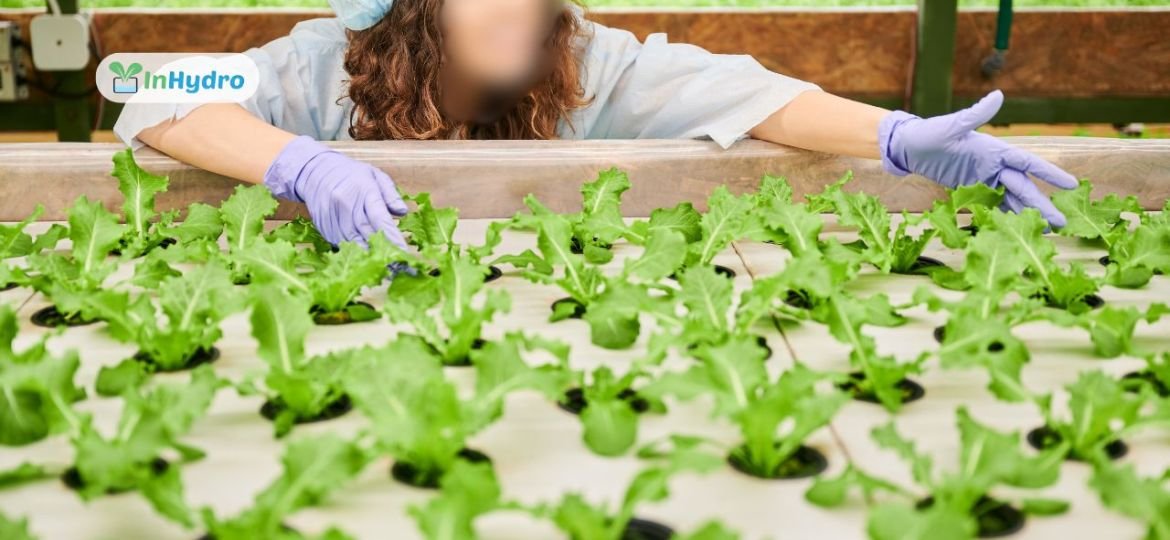
The Global Hydroponics Market: Growth, Opportunities, and Challenges
The global hydroponics market has witnessed remarkable growth over the past decade and shows no signs of slowing down. As the demand for sustainable agriculture rises, hydroponics has emerged as a revolutionary solution, enabling high-yield farming with minimal resources. From urban centers to rural landscapes, this innovative method is reshaping the agricultural industry and addressing critical challenges such as land scarcity, water conservation, and food security.
In this article, we explore the growth, opportunities, and challenges that define the global hydroponics market, offering insights into its future potential.
Hydroponics Market Growth: Key Drivers
The hydroponics market is projected to grow exponentially, driven by several key factors:
1. Increasing Demand for Sustainable Farming
With rising awareness of climate change and environmental degradation, hydroponics has become synonymous with sustainable farming. Its water-saving capabilities and soil-less nature are attracting global attention.
- Hydroponics uses up to 90% less water compared to traditional farming.
- It eliminates soil erosion and reduces dependency on harmful pesticides.
2. Urbanization and Vertical Farming
As urban areas expand, traditional farmland is shrinking. Hydroponics offers a solution through vertical farming, where crops are grown in stacked layers or compact spaces.
- Urban areas like Singapore, Tokyo, and New York are investing heavily in vertical hydroponic farms.
- This trend supports local food production and reduces transportation costs and carbon emissions.
3. Technological Advancements in Agriculture
The integration of IoT, AI, and automation has made hydroponics more efficient and scalable. Farmers now monitor crop health, nutrient levels, and environmental factors in real time, enhancing productivity.
Opportunities in the Hydroponics Market
While the hydroponics market is thriving, it also opens doors to new opportunities for businesses, governments, and individuals.
1. Commercial Farming and Export Potential
Hydroponics is gaining popularity in commercial farming, especially for high-value crops such as leafy greens, herbs, and fruits. The demand for organic and pesticide-free produce is rising globally, creating lucrative export opportunities.
2. Urban Farming Solutions
The market for home and community-based hydroponic systems is growing. Affordable DIY kits and smart, compact designs allow individuals to grow their own food, even in limited spaces.
3. Employment and Skill Development
The expansion of hydroponic farms is creating jobs in areas such as farm management, research, equipment manufacturing, and system design. Training programs and certifications are preparing a workforce for the future of agriculture.
4. Food Security in Developing Regions
Governments and NGOs are adopting hydroponics to combat food insecurity in resource-limited regions. Its low water and space requirements make it a viable option for drought-prone areas.
Challenges Facing the Hydroponics Market
Despite its benefits, the hydroponics market faces several obstacles that must be addressed for widespread adoption.
1. High Initial Investment
Setting up a hydroponic system can be expensive, especially for large-scale operations. Costs include equipment, technology, and energy requirements for lighting and climate control.
- Solution: Governments and private investors can provide subsidies or grants to offset initial costs and promote adoption.
2. Technical Expertise
Hydroponic farming requires specialized knowledge of system management, nutrient formulation, and pest control. The lack of trained professionals can hinder market growth.
- Solution: Educational programs, online courses, and community workshops can bridge this knowledge gap.
3. Energy Consumption
While hydroponics saves water, it often relies on artificial lighting and climate control, which can increase energy consumption.
- Solution: Integrating renewable energy sources like solar and wind power can reduce the carbon footprint of hydroponic systems.
4. Limited Crop Variety
Currently, hydroponics is best suited for crops like lettuce, spinach, and herbs. Expanding its application to grains, tubers, and other staple crops is challenging.
- Solution: Ongoing research and development can help overcome these limitations, paving the way for diverse crop production.
Regional Insights: Hydroponics Around the World
1. North America
The United States and Canada are at the forefront of hydroponic farming, with a strong focus on technological innovation and sustainability. Urban centers are driving demand for fresh, local produce.
2. Europe
Europe leads in policy-driven adoption, with countries like the Netherlands and Germany excelling in greenhouse and hydroponic technologies. EU policies promote eco-friendly farming practices.
3. Asia-Pacific
Rapid urbanization and food security concerns are fueling growth in countries like India, China, and Japan. Government initiatives and affordable labor are driving market expansion.
4. Middle East and Africa
Hydroponics is addressing agricultural challenges in arid regions, offering a sustainable solution to water scarcity and extreme climates. The UAE and Saudi Arabia are emerging as leaders in this sector.
Future Outlook for the Hydroponics Market
The global hydroponics market is poised for sustained growth, with innovations and investments shaping its trajectory. Key trends to watch include:
- Increased adoption of renewable energy to power farms.
- Advancements in automated systems for precision farming.
- Expansion into rural and resource-limited regions to enhance food security.
By addressing existing challenges and leveraging opportunities, hydroponics has the potential to revolutionize agriculture, making it more sustainable, resilient, and efficient.
Conclusion
The global hydroponics market is a dynamic and evolving landscape, offering immense opportunities for innovation and growth. While challenges such as high costs and technical expertise remain, the benefits of hydroponic farming far outweigh these obstacles.
As we move towards a future defined by urbanization, climate change, and the need for sustainable food production, hydroponics stands out as a beacon of hope. With continued investments, policy support, and technological advancements, the hydroponics market is set to transform global agriculture, ensuring a greener and more sustainable world.

